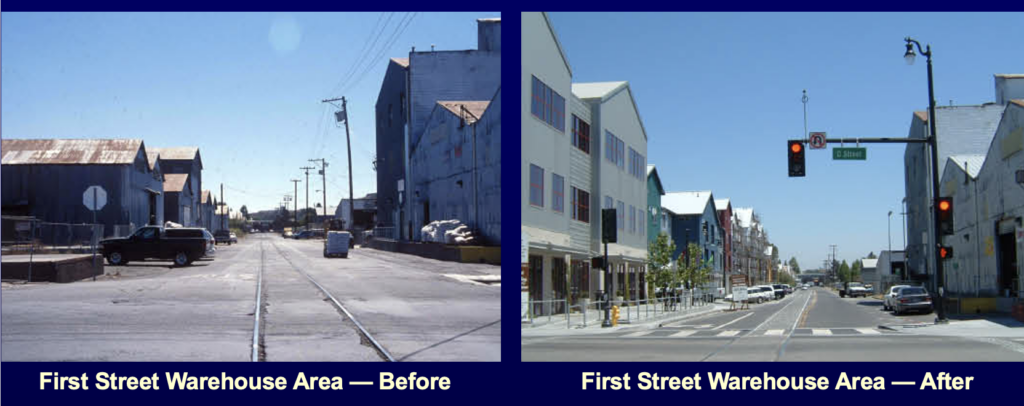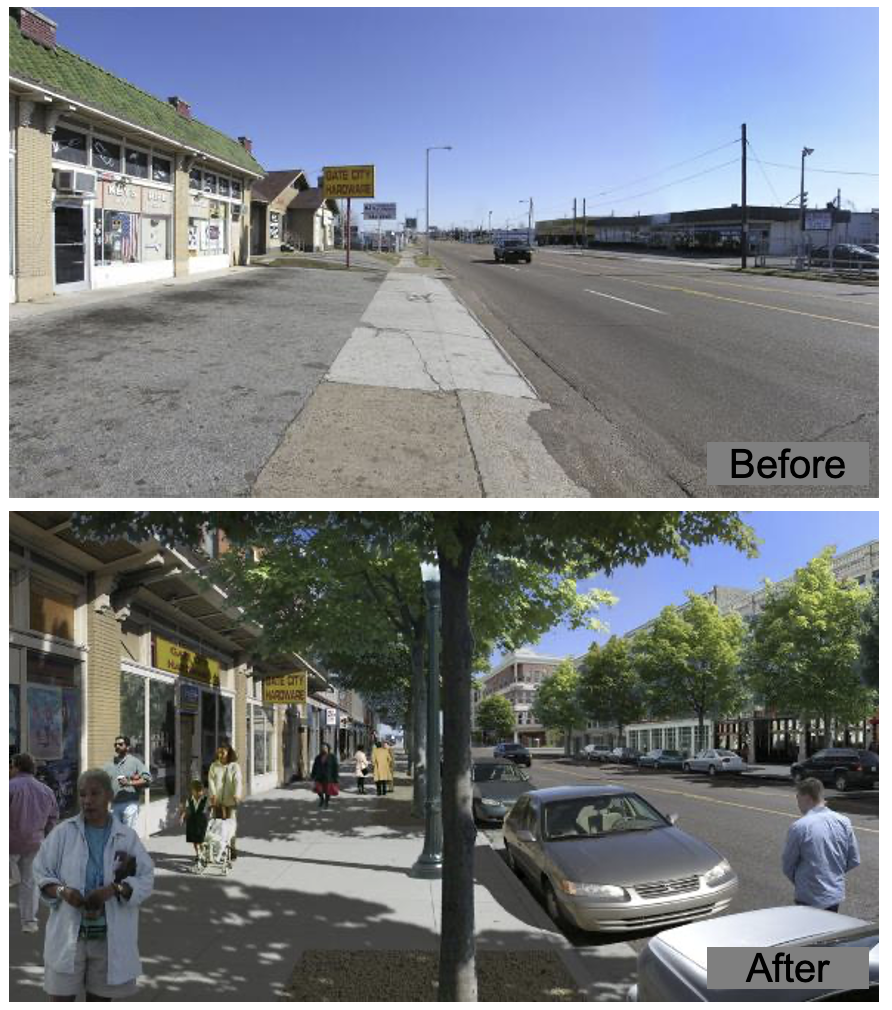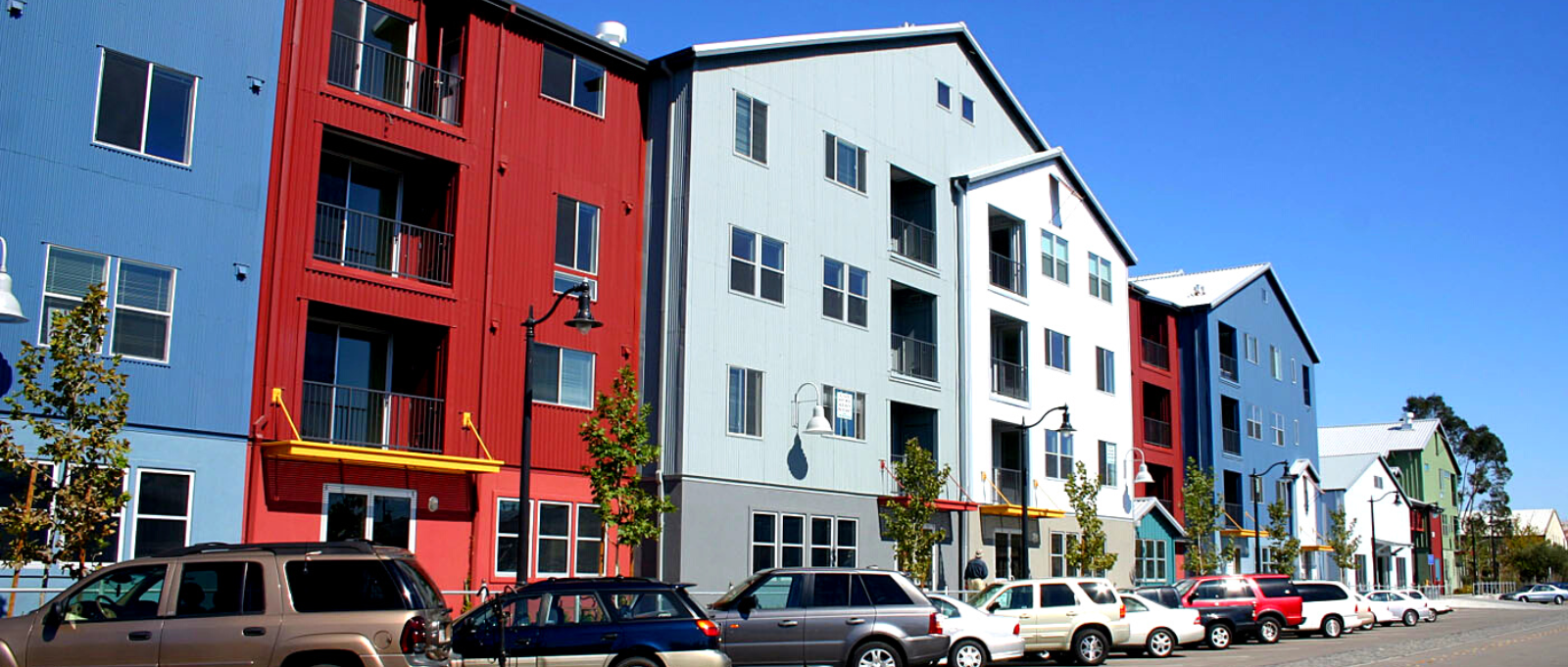July 28, 2022
Topic
Governor Newsom has signed the largest state budget ever at over $300 billion into law and it includes more than $2 billion for a variety of housing programs. But those programs will only be truly effective if local governments facilitate the construction of more housing.
Debates continue to roar over whether modest increases in density in single family and urban infill zones would disastrously undercut neighborhood quality, character, and local control. But, in fact, a major land use tool remains available to local governments to both exercise their ability to create the communities they want and to accommodate the need for more housing. That tool is the Form-Based Code.
The Consequences of the Use-Based Code
Most localities currently prescribe acceptable land uses through a Use-Based Code. Simply put, a Use-Based Code divides a community’s land into different zones based on the use of the land. Communities typically have separate zones for single family homes, multifamily buildings, retail and commercial buildings, office buildings, and industrial uses.
This approach to land use has a host of consequences—intentional and not—including often the segregation of people by race or income. The Othering & Belonging Institute at UC Berkeley notes,
“Euclidean ‘use’ zoning ostensibly began as a way to mitigate negative effects of industrial and urban development (light and air pollution) on residences by separating those uses and as a prophylactic alternative to nuisance tort law. However, local governments quickly used this authority to perpetuate racial and economic segregation and entrench redlining.”
Use-based codes have also increased our reliance on driving to carry out daily life. As an example, if a city designates much of its centrally-located land for single family homes, housing costs often rise dramatically and lower-income residents are forced to move further away from the city center where housing may be more affordable but public transit options are scarce.

What is a Form-Based Code?
Rather than primarily focusing on the use of the land, a Form-Based Code makes the form of the building on the land the controlling element. Thus, a Form-Based Code allows for different uses of parcels of land which are near each other while preserving compatibility of design and appearance.
Using a form-based approach means that specific design standards apply to all buildings within a specified area, no matter what the use inside the building may be. For example, a single family home may be next door to a duplex if the design and appearance of the two buildings are compatible, even if the uses are different. A form-based approach does not mean every building must look alike or appear “cookie cutter.” Rather, the objective standards address elements such as lot coverage, street trees, sidewalks, height, building materials, and parking. The creativity of design and appearance remain with the property developer.
In a form-based approach, the form that is permitted in a particular area primarily differentiates the uses within the buildings. Industrial uses, for example, would not appear in residential areas where standards defining the form of the building make elements such as oversized doors and loading ramps impermissible. On the other hand, mixed use single family residential, multifamily residential, and commercial development can be compatible within prescribed standards applying to the same geographic area.
Focusing on the form rather than the use of the building has many advantages. First, the community can establish and preserve neighborhood character, resulting in increased and sustained value. Second, a mix of housing types—including single family and multifamily—can be accommodated in the same neighborhood. As a result, ownership housing can coexist with rental housing, bringing different income levels together. Third, local retail can be integrated into neighborhoods with residential uses, allowing for easy and practical walking or biking access to nearby stores, benefiting both residents and the environment. And finally, all uses including office and commercial can be integrated in a manner that creates an appealing and cohesive community atmosphere.

Bringing Form-Based Codes to Communities
Citizens throughout the state can play a part in bringing Form-Based Codes to their cities or neighborhoods by proposing them to the local City Council or Board of Supervisors. Or better yet, neighbors can organize to support such an approach.
As City Councils and County Supervisors grapple with the converging issues of housing, climate change, and social inequities, a Form-Based Code can be a game-changing tool. It can help increase the supply of housing and restore affordability to the housing market, create more sustainable and environmentally sound communities, and bring equity and inclusion to our neighborhoods.

Policy Corner
The Legislature enters its final month of this year’s session in August with midnight of the last day of the month bringing, as the saying goes, a “hard stop.” Of paramount importance to CivicWell are three bills and three budget items.
- SB 852 by Senator Bill Dodd, sponsored by CivicWell and Insurance Commissioner Ricardo Lara, would allow local governments to form climate resilience districts (CRDs) to plan, fund, and manage climate mitigation and adaptation projects. We anticipate that an added feature of the bill would allow CRDs to purchase insurance to shift climate risk (e.g., obtaining insurance to cover the cost of debris cleanup after a wildfire). The bill will first be heard in the Assembly Appropriations Committee and, assuming it clears the Committee, will go to the floor of the Assembly and back to the Senate before being sent to the Governor.
- AB 2201 by Assemblymember Steve Bennett would prohibit the issuance of a well permit unless the local Sustainable Groundwater Agency (GSA) finds it would not interfere with or impede reaching sustainability in the basin. In addition, in most cases, an engineer’s report would need to be prepared to demonstrate that the proposed well would not adversely affect surrounding wells. Since the adoption of the Sustainable Groundwater Management Act (SGMA) in 2014, there has been a proliferation of well permits issued by counties and cities —especially as the current drought has significantly limited the availability of surface water—with thousands of well permits approved in the last eight years. The dramatic increase in the number of wells makes progress toward achieving groundwater basin sustainability in many places even more difficult and threatens water supply for vulnerable communities and small farmers. The bill is currently in the Senate Appropriations Committee. Again, assuming it succeeds in the Committee, it will go to the Senate floor and back to the Assembly for final consideration.
- AB 2438 by Assemblymember Laura Friedman would require the California Transportation Agency (CalSTA), the Department of Transportation (Caltrans), and the California Transportation Commission (CTC) to incorporate the principles of the Climate Action Plan for California Infrastructure (CAPTI) into their funding program guidelines. The bill would establish alignment between the climate goals and objectives of the state with the transportation funding programs of the state. It would also increase transparency and accountability of the agencies to make sure that transportation funding is allocated consistent with the climate priorities of the state. The bill is currently in the Senate Appropriations Committee. Again, assuming it succeeds in the Committee, it will go to the Senate floor and back to the Assembly for final consideration.
Budget items that are of significance include:
- Adaptive Reuse for Housing: although CivicWell’s sponsored bill, SB 1369 by Senator Bob Wieckowski, did not make headway earlier this session, the budget in chief, SB 154, contains $150 million for adaptive reuse as part of an agreement between the Governor and the Legislature to provide $450 million for adaptive reuse over two years. However, the budget bill has no definition of which projects would be eligible for funding. We are working with Senator Wieckowski to try to add language to an upcoming budget trailer bill that would be consistent with SB 1369.
- Water and Drought Resilience: CivicWell is part of a broad-based coalition seeking funding for a number of programs related to water and drought resilience. Among them are multibenefit land repurposing, groundwater recharge, low income water rate assistance, and SGMA implementation. SB 154 includes at least $1.465 billion for water and drought resilience, so we are hopeful that the trailer bill yet to come will allocate substantial funds to these efforts.
- Climate Resilience and Energy: SB 154 specifies that $21 billion will be allocated to a climate package, the details of which have yet to be negotiated. Nearly 90 organizations, led by CivicWell, have joined together to advocate for significant funding for forest management, offsetting climate impacts to disadvantaged communities, addressing extreme heat, climate adaptation strategies, and sustaining climate investments over time, among other requests.
It is crunch time for the Legislature in August and we will be working to realize as much progress as possible for our climate and local governments.
This article is part of our monthly Livable Places Update newsletter.
Subscribe today!
Header photo is a downtown neighborhood in Petaluma, CA, built using a Form-Based Code.





